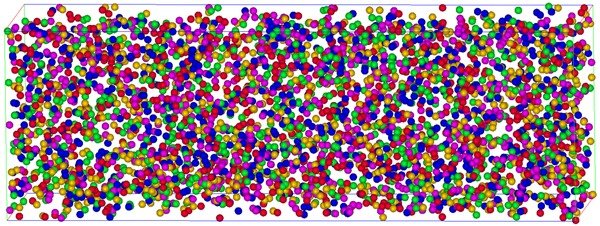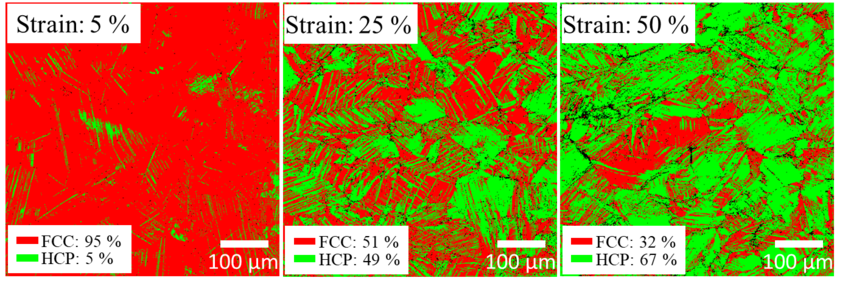
Cryogenic deformation behavior of an interstitial TRIP high-entropy alloy
The preliminary results from this project show that the cryogenic condition leads to the decrease of stacking fault energy and the increase of flow stress, both of which promote the phase transformation from the face-centered cubic (FCC) matrix to the hexagonal close-packed (HCP) phase. At a tensile strain of 50 %, the fraction of HCP phase increases from 50 % at room temperature to 67 % at 77 K. Such high extent of phase transformation produces the highest strain hardening rate (3.5 GPa at 20 % strain) for FCC HEAs thus far. As a result, an exceptional combination of strength and ductility (UTS: 1.3 GPa, Elongation: 50 %) is achieved for the iHEA at the cryogenic condition.

EBSD phase maps showing the transformation process of the iHEA with the increase of local strain levels at 77 K.












